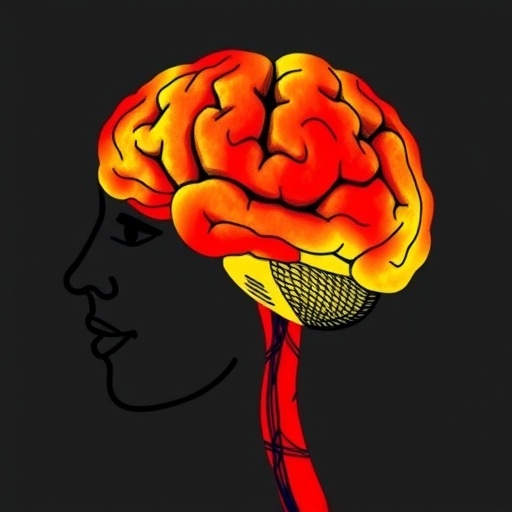Dolutegravir (DTG)-based antiretroviral therapy has revolutionized HIV treatment worldwide, becoming a cornerstone in managing the infection. However, as its global implementation expands into resource-limited settings such as Ethiopia, emerging evidence highlights a concerning prevalence of neuropsychiatric adverse events (NPAEs) among patients initiating this regimen. A recent multicenter cross-sectional study conducted in Ethiopia reveals a 28.3% occurrence of these neuropsychiatric side effects, pointing to significant clinical challenges that undermine therapeutic effectiveness and patient adherence.
In clinical practice, the management of HIV demands not only viral suppression but also the mitigation of treatment-related side effects. Neuropsychiatric adverse events—encompassing symptoms such as depression, insomnia, and aggressive mood—pose substantial risks to patient quality of life and retention in care. This Ethiopian study provides critical insights by quantifying the burden of such adverse effects among people living with HIV (PLHIV) newly prescribed DTG-based regimens under real-life conditions, a topic previously underexplored in low-resource environments.
The investigation encompassed 620 participants from multiple healthcare centers throughout Ethiopia, capturing diverse demographic and clinical profiles. Researchers utilized structured questionnaires and patient interviews alongside review of medical records to obtain comprehensive data on sociodemographic variables, clinical status, and self-reported neuropsychiatric symptoms. Analytical strategies including both bivariate and multivariate models identified strong associations between certain patient characteristics and the likelihood of experiencing neuropsychiatric adverse events.
Notably, female patients were found to have a significantly higher adjusted odds ratio (AOR) for NPAEs at 1.72 compared to males, suggesting sex-related biological or psychosocial vulnerabilities in DTG tolerability. Age also emerged as a potent factor, with individuals aged between 47 and 54 years exhibiting an AOR of 3.8, and those aged 55 to 75 years showing an AOR of 1.27. This age-related susceptibility may reflect underlying neurological changes or cumulative exposure to antiretroviral therapy influencing adverse event development.
Occupational status was instrumental in the risk profile, as unemployment correlated with an increased AOR of 1.35 for neuropsychiatric symptoms. Additionally, physical activity levels played a crucial role—patients with minimal or no physical activity had markedly heightened odds (AOR of 2.4 and 3.6, respectively), emphasizing the protective role of an active lifestyle in mitigating these side effects. These findings underscore the multifactorial nature of adverse events, integrating biomedical and lifestyle dimensions.
Duration of therapy was similarly influential, with patients on DTG-based regimens for 6 to 12 months carrying a threefold increased risk (AOR = 3.35), and those between 13 to 24 months maintaining an elevated risk (AOR = 2.67). This temporal relationship suggests cumulative neurotoxicity or adaptive neuropsychiatric responses over time, warranting vigilant monitoring beyond initial treatment phases.
Disease progression as classified by the WHO clinical staging system surfaced as a robust correlate: patients in stages II through IV exhibited significantly higher odds of experiencing NPAEs—AORs ranging from 3.65 to 4.21, respectively. This association may be driven by systemic illness severity, immune activation, or CNS involvement exacerbating neuropsychiatric vulnerability during DTG therapy. Moreover, detectable viral load at treatment initiation was independently associated with an increased risk (AOR = 1.24), highlighting incomplete viral suppression as a determinant of poorer neuropsychiatric outcomes.
These findings raise pivotal concerns about the neuropsychiatric safety landscape of DTG in populations with advanced HIV disease and underscore the necessity of individualized patient monitoring frameworks. Early identification and management of neuropsychiatric adverse events could improve adherence rates, reduce regimen switching and discontinuation, and ultimately enhance long-term treatment success. Clinicians are urged to employ comprehensive screening tools, integrate psychosocial interventions, and promote physical activity as potential mitigating strategies.
The Ethiopian study’s implications extend to global HIV treatment programs, where scale-up of DTG regimens intersects with heterogeneous patient populations and limited psychiatric care resources. Tailored policies must prioritize patient subgroups identified as high-risk—older adults, women, unemployed individuals, and those with advanced disease—ensuring holistic care that addresses mental health alongside virological control. Future research should explore mechanistic pathways underlying these associations and evaluate interventional models in similar real-world settings.
From a pharmacological perspective, neuropsychiatric side effects likely arise from DTG’s central nervous system penetration and modulation of neurotransmitter systems, yet individual susceptibilities vary. Genetic, metabolic, and psychosocial parameters may modulate adverse reaction profiles, demanding integrative research approaches. Moreover, temporal patterns observed in the Ethiopian cohort raise questions about cumulative neurotoxicity, neuroinflammation, or drug-drug interactions influencing persistence or resolution of symptoms.
Overall, this rigorous multicenter investigation illuminates a critical aspect of HIV management through its nuanced examination of factors linked to neuropsychiatric adverse events in DTG-treated patients. Its evidence base empowers clinicians, public health experts, and policymakers to refine therapeutic strategies, bolster monitoring protocols, and enhance patient-centered care in resource-constrained environments confronting the contemporary challenges of HIV treatment.
As the global fight against HIV evolves, balancing potent antiretroviral efficacy with tolerability remains paramount. The Ethiopian experience offers valuable lessons for optimizing DTG implementation worldwide, reminding stakeholders that biomedical triumphs must be matched by attentiveness to neuropsychiatric health to achieve sustainable success in epidemic control.
Subject of Research: Neuropsychiatric adverse events and associated factors in people living with HIV initiating Dolutegravir-based antiretroviral therapy in Ethiopia.
Article Title: Patients reported neuropsychiatric adverse events and associated factors among PLHIV patients receiving DTG-based regimen antiretroviral therapy real-life clinical practice in Ethiopia: multi center cross-sectional study.
Article References:
Chanie, G.S., Belachew, E.A., Seid, A.M. et al. Patients reported neuropsychiatric adverse events and associated factors among PLHIV patients receiving DTG-based regimen antiretroviral therapy real-life clinical practice in Ethiopia: multi center cross-sectional study. BMC Psychiatry 25, 383 (2025). https://doi.org/10.1186/s12888-025-06820-5
Image Credits: AI Generated




